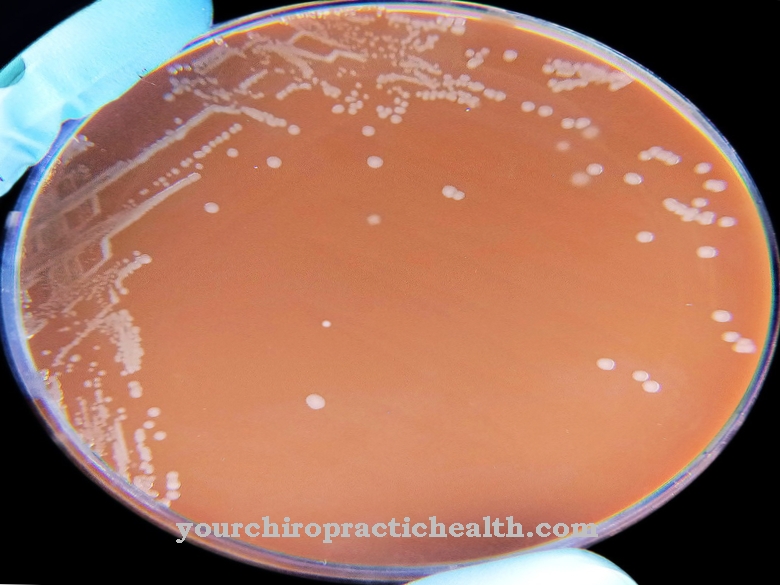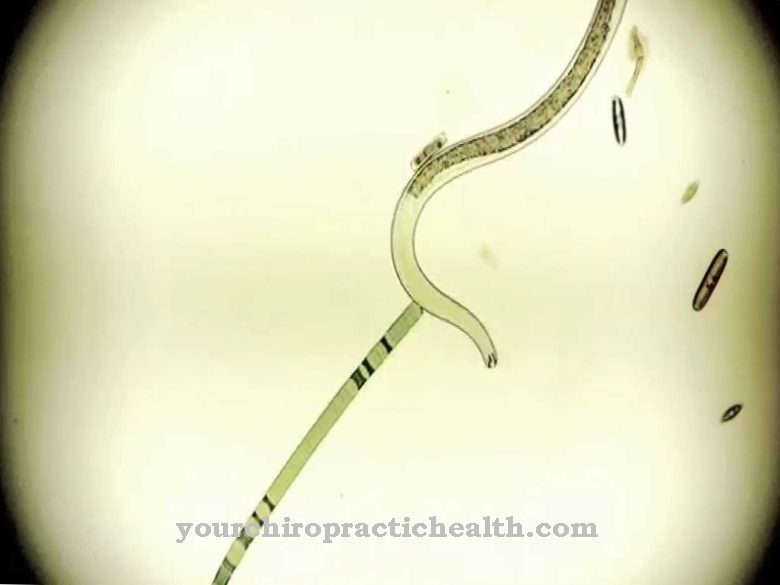Streptomyces sudanensis is a form of actinobacteria. The bacteria in this group are mostly useful, but a few specific species can cause disease. While drugs are obtained from many forms of actinobacteria, the recently re-researched Streptomyces sudanensis is hazardous to human health.
What is Streptomyces sudanensis?
Streptomycetes are striking because of their similarity to mushrooms. Like all actinomycetes, they are rod-shaped. The prefix "Strepto" denotes the chain-like arrangement. Streptomycetes grow in chain-like, network-like branches in a row, which makes them resemble a mycelium.
Occurrence, Distribution & Properties
On the one hand, streptomycetes live in the soil that is created by the final stage of decomposition of dead animals or parts of plants. In this way they contribute to maintaining the ecological balance. The characteristic smell of the earth is due to the production of the scent geosmin by the bacteria.
On the other hand, they are also found in the intestines of worms and insects as digestive bacteria. Streptomycetes are u. a. differentiated according to the place of their occurrence. The bacterium can be found worldwide. In Europe the bacterium occurs sporadically due to the moderate climatic conditions, in the tropics such as Sudan and India (Madras) it is very common.
The bacterium enters the body through the smallest injuries (e.g. from splinters of wood) or poor oral hygiene. Poorly cared for and decaying teeth and gum disease can spread the bacteria. In the case of damaged teeth or inflammation of the gums, the infection can also be caused by jaw operations.
Streptomycec sudanensis is a gram positive bacterium, i. H. The Gram stain turns it blue, which reveals the substance of your cell wall (murein), which, however, cannot be called a cell membrane. Gram-negative bacteria have a cell membrane made of lipids. The staining method in microscopy, named after the Danish bacteriologist Hans-Christian Gram, is used to classify bacteria.
Streptomycec sudanensis is aerobic, i.e. H. the metabolism is dependent on oxygen. The bacterium does not live from photosynthesis. Therefore Streptomyces sudanensis is assigned to the bacteria and not to the plant kingdom or the kingdom of the fungi.
Streptomyces sudanensis, along with Streptomyces somaliensis and Streptomyces madurae, is a tropical form of actinobacteria that are harmful to human health.
Meaning & function
Actinomycetes in general are essential for the existence of animate nature, since the decomposition of dead material causes other life forms to flourish, on which humans also feed. The transformation of the decaying material into soil also prevents contamination from dead cadavers.
The bacteria do not normally occur in the human body and cannot harm it if there are no injuries. Streptomycetes even become different groups of antibiotics, e.g. B. Amoxicillin against urinary tract infections, as well as agents against Candida fungal diseases (such as nystatin).
Many types of actinomycetes are dangerous to plants and animals. Adequate hygiene and strengthening of defenses, protected handling of the infected secretion, wearing shoes, immediate disinfection of small wounds and avoiding the risk of injury are important in order to prevent infection.
Illnesses & ailments
Streptomyces sudanensis can cause the mycetoma, an initially painless, chronic skin inflammation. This is a tropical disease with a long incubation period. First, there are swellings that are closely lined up, mostly on the calves, feet or hands. Fistulas filled with grains later form on the skin of the affected part of the body, which secrete a purulent fluid.
If left untreated, the infection can spread to the lungs, intestines, meninges and bones through the spread of the foci of pus. Lung involvement can cause pneumonia, brain involvement can cause meningitis, and bone involvement can cause bone corrosion. In the worst case, the course can lead to deformed limbs or life-threatening blood poisoning in particularly susceptible people.
The infection is diagnosed through medical examination, bacterial and fungal cultures, from the pus emerging from the fistulas. The disease does not heal by itself and must be treated with antibiotics (e.g. penicillin) for months or years. It is curable in the early stages. If it is very advanced, the sources of infection or entire limbs must be surgically removed.
A trip to the tropics harbors certain dangers, especially if the trip goes to the countryside and if there are small injuries to the hand or foot. The rest of the body is less likely to develop the fistulas than the limbs. Vaccines against actinomycetoma caused by Streptomyces sudanensis are not known. Farm workers, as well as people who have to work outdoors under inhumane conditions or at risk of injury, are particularly affected and at risk.
A weak immune system, also caused by malnutrition, age or long-term illnesses, can complicate the course of the disease. The socio-economic situation of the person affected as well as general medical care and hygiene standards in the country concerned play a decisive role.

.jpg)






















.jpg)



